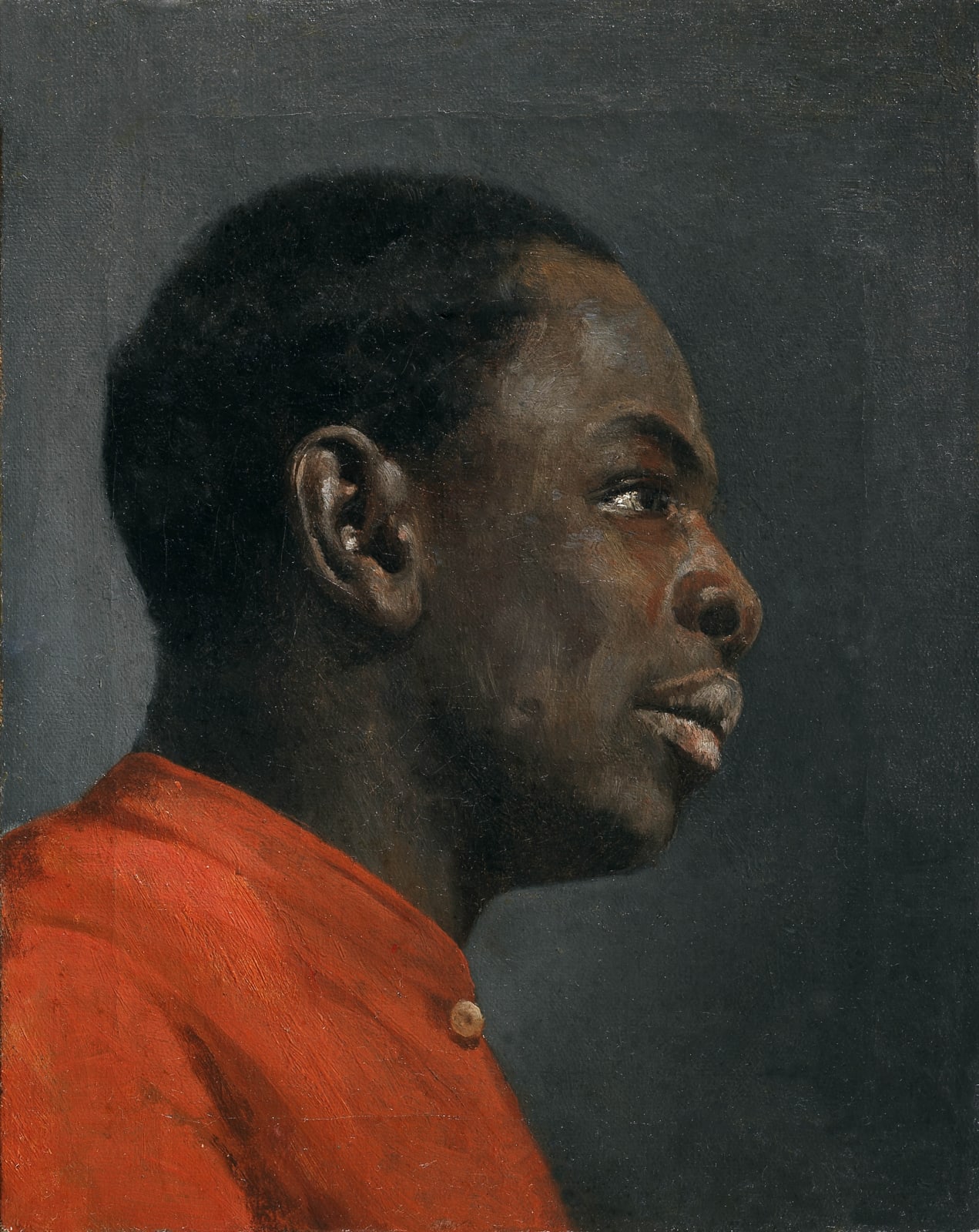
French School of the XIX century
SOLD
Provenance
Libero Bovio collection, Naples
In this small portrait, most probably of the French school, the artist has depicted a black man in profile, his gaze determined and searching. The man, portrayed from slightly below his own level, appears to have been caught unawares, probably a device used to emphasise his fleeting expression. The informal nature of the mood in the picture is confirmed by the man’s attire, a brick-red shirt that makes it difficult to ascertain his social status. He may have been a servant, a merchant or even a slave. Yet the painting does not appear to belong the trend in portraiture in the second decade of the 19th century where black people, i. e. slaves, were frequently depicted in a compassionate light, as for example in Géricault’s well-known paintings (see Théodore Géricault, Portrait of a Negro, 47 x 37 cm., 1820–3), because in this picture the sitter’s lofty, proud and determined gaze is imbued with a strong sense of dignity. Worlds away from the formal rules of official portraiture, the painting reveals the artist’s immense skill with the palette, his colours fresh and warm, and a bold command of introspection. The painter uses sweeping brushstrokes to apply a few simple hues, ranging from black, brown and brick-red to the blue-grey of the background. It is precisely this range of colours that causes the young man’s profile to emerge, his gaze capturing the observer’s full attention. Introspective research distances the artist’s work not only from traditional portraits but also from the connotative realism that is a feature of so much 19th century portraiture. His background is stark, his tone austere yet confidential, the presence of accessories reduced to a bare minimum. The clarity of his outlines, his fluid handling of paint and the delicacy of his brushwork all serve to bolster his attempt to impart human dignity to the portrait. This attempt to endow the “sauvage”, the “alien” with intense humanity emerged in certain portraits as early as the late 18th century but more especially in the early 19th century, as for example in Jean-Antoine Gros’ Tête de nègre painted at the start of the 19th century. Thus the portrait under discussion here may well have been painted in that same span of years.
Join the mailing list
Subscribe to our newsletter to receive all the news about exhibitions, fairs and new acquisitions!
